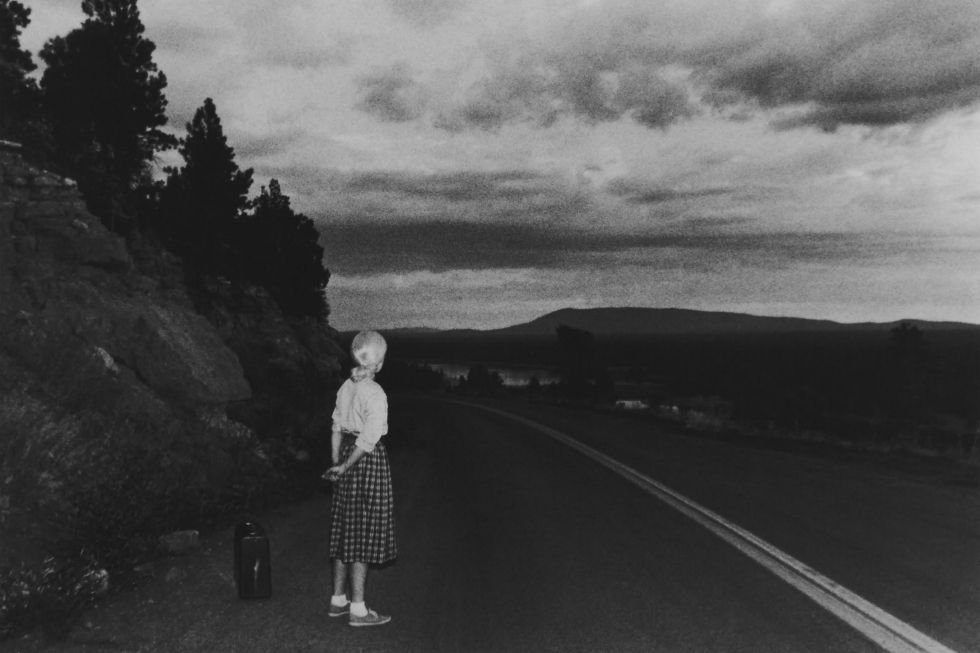Cindy Sherman: Mining The Celluloid Landscape

On display as part of Tate Liverpool’s current exhibition An Imagined Museum, C. James Fagan analyses the dreamlike, uneasy quality of Cindy Sherman’s Untitled Film Still #48…
The 20th century was one of cinema – and of projected narratives – in which the mass media’s infiltration of our lives led to a kind of voluntary collective hallucination. This shared experience has resulted in a visual shorthand for our own experiences. The effects of mass produced media on the psyche is still under investigation, but one thing is resoundingly clear: the influence of cinema has been great and deep. No generation alive has grown up without having their experience of the world filtered through the glow of the silver screen.
It is hardly surprising then that artists have mined the celluloid landscape. One such artist is Cindy Sherman, who delved into the mythical, almost magical properties of image-making, by creating a series of Untitled Film Stills, which exploited techniques usually found in film. Although drawing inspiration from ‘publicity stills like you’d see around 42nd Street’, Untitled Film Still #48 is no hollow exercise in aping ‘classic Hollywood’ aesthetics. Sherman appropriates and subverts signifiers of the era in order to raise other, more pertinent questions that hint at the human condition.
What is Untitled Film Still #48? Ostensibly it is a black and white image of a figure in a landscape. But, on another level, it communicates a wealth of information – and feeling. The figure is a teenage girl, the landscape is America, she is stood by a highway, and this is the 1950s. How did I come to these conclusions? These are all memories I have of similar images dredged up from the films I have seen. The first time you encounter this image, then, it might seem uncannily familiar. Such familiarity makes this picture at once haunting, disturbing and comforting. Like a case of cultural déjà vu, the confidence in ‘knowing’ this image is tempered by the following nagging questions: You’ve been here before, but when? Was it a dream? A memory stored?
Perhaps; but not directly. Through film you have travelled this landscape, and in life you have stood on the edge of something; been enveloped by a sense of isolation, been compelled to look to the horizon, to look to the future despite a sense of unease over what lay beyond that horizon. Equally, a sense of unease may come from another cinematic source; it’s a small leap from this image to the work of director David Lynch, who uses similar tropes to those found in Untitled Film Still #48 to express a world where darkness lies just beneath the surface.
This is truly an image of its age, and yet a simulation of a world that doesn’t quite exist. Is it an image to remember?
You already do.
C. James Fagan
This essay is taken from Tate Liverpool’s new seasonal publication Compass. Available for £1, exclusively at Tate Liverpool, it features articles and essays exploring exhibitions on each floor of the gallery. Find out more information about Compass here
See Works to Know by Heart: An Imagined Museum – Works from the Pompidou, Tate and MMK collections — at Tate Liverpool (UK) from Friday 20 November 2015-14 February 2016
Image: Cindy Sherman, born 1954 Untitled Film Still #48 1979, reprinted 1998 Photograph, gelatin silver print on paper 710 x 955 mm © Cindy Sherman; courtesy Tate
Further reading:
“Art actually is under threat”: What Would You Save In An Imagined Museum?
“Memory’s power to grant meaning”: An Imagined Museum — Reviewed
The Double Negative Presents Fahrenheit 451 (1966)





